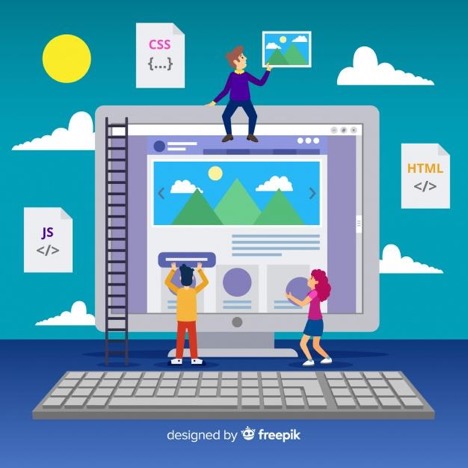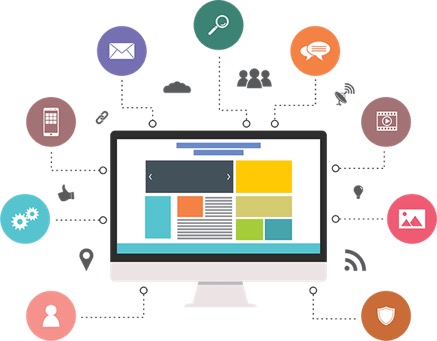Faster internet, safer online transactions & lower cost of technology has given immense opportunity to every single individual in the country today to start a business on their own. While starting an e-Commerce business may sound tricky at the start of it, with a lot of technical jargon thrown at your face, from domain & hosting, the costs associated with building a good looking website management, tools and analytics, it actually isn’t that difficult!
If you ask me what are the steps one should follow to actually start selling online via their own website, I would say there are about 6 steps.
Note – this article is for complete beginners in retail, the ones who don’t have an offline retail experience too
So, what do you do in those 6 steps, here is a step-by-step guide:
Step 1: Products Sourcing
This is the time that you focus all your energy into sourcing your products. Where are you going to obtain the products from, which manufacturer/wholesaler/distributor, what is the margin you have at hand, planning business economics (heavy word, it’s simple hisaab of your PnL).
This step can be referred to as ‘setting up the foundation of your business’ and hence a lot of attention needs to be put into what sort of products you are willing to sell online, at the same time it should also be a passion point in your life so that you put enough heart and soul to understand the audience that wants that product, the market that the product needs to survive in.

Never move ahead to step 2, till you’re confident about your products.
Step 2: Photography & Cataloging
Once the products are shortlisted, create basic content for them like photographs, catalogue sheet and so on.
You can use a plain white background and white LEDs to create your own basic studio and start clicking from a good camera phone. Trust me, most phone camera’s today will give excellent results if you invest in the white background and LED lighting.
Start writing product information in an excel sheet like SKU number, title, description, MRP, offer price, product type, category, sizes available, etc. (things you think your buyer will want to know about every product). This is a heavy duty effort.
Step 3: Website Development
For someone who has no clue about how products will perform, they don’t know their TG well, the whole e-commerce business is an experiment to see how well the product is received, I’d say build your website on Shopify. If you already have an idea of your products target market, the audience, etc. build your website on WooCommerce. Email me on deep@digichefs.com to know the difference between WooCommerce & Shopify and which website is the right one for you!
I prefer building a website in Shopify till you have proof of concept of your business, so invest INR 3K per month for 6 months, explore your market and audience and then you MAY move to Woocommerce which will be lower in terms of cost in the long run.
Start building a website from scratch by choosing a great Shopify theme. Themes like Brooklyn are free and amazing, to begin with! Design nice creatives using canva.com. Write ‘click-baity’ call to actions to put up on the website.
In this step, you must also start looking for a payment gateway. In India right now, the most well-known ones include – Paytm, Razorpay, PayU, etc. Setting up a payment gateway is a fairly simple task, but the process can take about a week’s time.
Step 4: Test, Test, Test
Start talking to your friends and family about the new website, get feedback, and start making changes as per the feedback. Make sure you have tested your website thoroughly across various devices, across various browsers to ensure that everything is working smoothly so that you don’t give a poor experience to your customers. Customer experience is very important! Once testing is completed, install all the necessary analytics code like Google Analytics script, FB pixels, etc.
Step 5: Digital Marketing & Advertising
This is the time that you start advertising and marketing your website online. The easiest way to begin is by using Facebook and Instagram ads compared to any other advertising channel. I definitely don’t recommend you to begin with SEO since that will be an intensive exercise from content & tech perspectives. Right now, the idea is to first understand your customers by getting some orders. Facebook and Instagram ads will give you better results and help you understand how the user’s journey is throughout the website, what are the things that they like & what are the things that they don’t. Start collecting email IDs and save the information in MailChimp lists. Do a low-level email marketing campaign once a week. A combination of FB + Insta ads along with remarketing and regular emailers should get you initial conversions.
You may also choose to choose a digital marketing course to learn the basics of how you can start small campaigns by yourself! As DigiChefs, we’ve worked with several companies in the e-commerce space and helped grow their revenues from INR 0 to millions. Check out our work here.
Step 6: Post sales journey
Keep talking to your customers via your newsletters. Ask them to review their buying experience, understand key insights that they have for you to improve your store. Keep optimizing! A good CRM is what makes Amazon what it is today!
So here we are, a quick overview of how you can begin your e-commerce business. Feel free to comment your opinions, experiences and queries on comments below or email me on deep@digichefs.com!
Share the article with your friends that you think should start up an e-commerce business soon!
Also Read: Online Reputation Management with Case Study







Great Article!! I think Digital Marketing Courses are great to help with e-business. Check the Courses that are great help for one to grow their e-businesses effectively.
You have shared very nice tips with us. Thank you so much for this article.
This blog was how do you say it? Relevant!! Finally I ave found something that helped me. Thanks!
Helpful Article
I just want to say I am just new to blogging and truly savored your blog. Likely I’m want to bookmark your website . You definitely have very good posts. With thanks for sharing your blog.